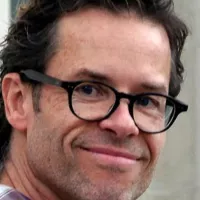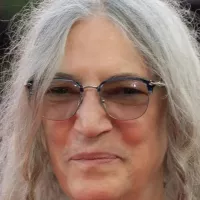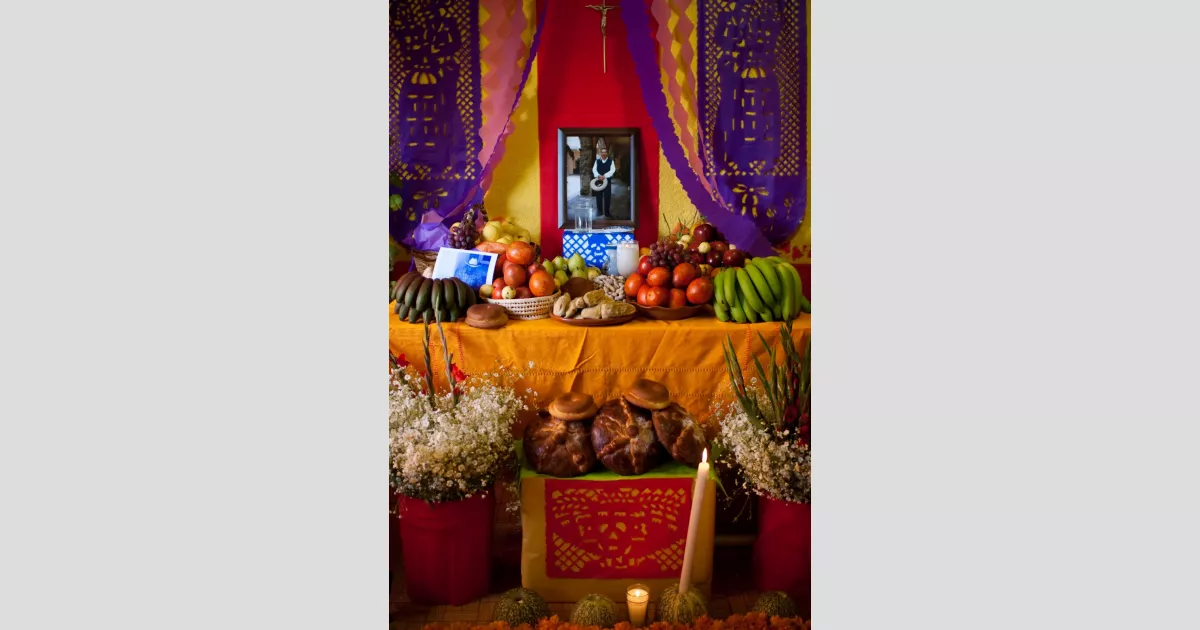The Day of the Dead, celebrated primarily on November 1st and 2nd, is a multi-day holiday where families and friends gather to remember and honor deceased loved ones. Celebrations, particularly in Mexico where the holiday largely developed, often involve sharing humorous stories and anecdotes about the departed. While some trace its origins to Indigenous Mexican traditions, others view it as a localized expression of Allhallowtide brought by the Spanish. Regardless of its precise origins, the Day of the Dead is characterized by its festive atmosphere and its role in preserving the memory of ancestors and cultural heritage.
1946: Rivera Paints Catrina Fresco
In 1946, Mexican Muralist Diego Rivera elaborated on Posada's image of a skeletal figure, Catrina, in a fresco, adding indigenous features to transform her into a nationalist emblem.
1950: Publication of The Labyrinth of Solitude
In 1950, Octavio Paz published his book-length essay "The Labyrinth of Solitude", in which he supported the syncretic view of the Día de Muertos tradition being a continuity of ancient Aztec festivals celebrating death.
1990: First All Souls' Procession
In 1990, the All Souls' Procession became an annual event in Tucson, Arizona, combining elements of traditional Day of the Dead celebrations with pagan harvest festivals.
2002: First Noche de Altares in Santa Ana
In 2002, the city of Santa Ana, California, began hosting the annual Noche de Altares, which has grown to become the largest such event in Southern California.
2008: UNESCO inscription
In 2008, the Day of the Dead tradition was inscribed in the Representative List of the Intangible Cultural Heritage of Humanity by UNESCO, recognizing its cultural significance.
2008: UNESCO Intangible Cultural Heritage listing
In 2008, the Day of the Dead tradition was inscribed in the Representative List of the Intangible Cultural Heritage of Humanity by UNESCO. This occurred amidst ongoing debate among Mexican academics regarding the festivity's origins, with some arguing it is a 20th-century rebranding of Spanish tradition.
2011: Jamaica Plain celebration discontinued
In 2011, the Day of the Dead celebration in Jamaica Plain, Boston, sponsored by Forest Hills Educational Trust and La Piñata, was discontinued after years of celebrating the cycle of life and death with music, dance, and offerings for departed loved ones.
November 1, 2015: Event at Santa Ana Regional Transportation Center
On November 1, 2015, a Day of the Dead event was held at the Santa Ana Regional Transportation Center for the first time, adding to the city's celebrations.
2015: Spectre film release
In 2015, the James Bond film Spectre featured a Day of the Dead parade in Mexico City during its opening sequence, even though no such parade existed at the time.
October 29, 2016: First Day of the Dead parade in Mexico City
On October 29, 2016, the first official Day of the Dead parade took place in Mexico City, organized by federal and local authorities due to the interest generated by the James Bond film Spectre and a desire to promote Mexican culture. The parade was attended by 250,000 people.
2021: Biden-Harris administration celebrates Día de Muertos
In 2021, the Biden-Harris administration celebrated the Día de Muertos.
Mentioned in this timeline
California is a U S state on the Pacific Coast...

Christmas is an annual festival celebrated on December th commemorating...
Arizona is a landlocked state in the Southwestern U S...
Jamaica is an island country located in the Caribbean south...
Sicily the largest and most populous Mediterranean island is an...

Mexico City is the capital and largest city of Mexico...
Trending

27 days ago Jamal Murray and Nikola Joki? discussed by David Adelman; Nuggets face Warriors and Suns.

2 days ago Kristin Chenoweth shines in 'The Queen of Versailles' Broadway adaptation.

Guy Pearce is an acclaimed Australian actor recognized for his versatility across film and television His performances have garnered significant...

26 minutes ago Patti Smith Discusses Desire, Celebrates 'Bread of Angels,' and Praises Musical Prophet

7 months ago Brad Paisley Festival Canceled: Charity Blames Seminole Tribe, Seeks Immunity Waiver.
5 days ago Jalen Johnson's Superstar Potential Shines as Hawks Beat Jazz Despite Markkanen & Bailey
Popular

William Franklin Graham III commonly known as Franklin Graham is...

XXXTentacion born Jahseh Dwayne Ricardo Onfroy was a controversial yet...

Cristiano Ronaldo often nicknamed CR is a Portuguese professional footballer...

Candace Owens is an American conservative political commentator and author...

Marjorie Taylor Greene known as MTG is a far-right American...

Michelle Obama is an American attorney author and former First...

